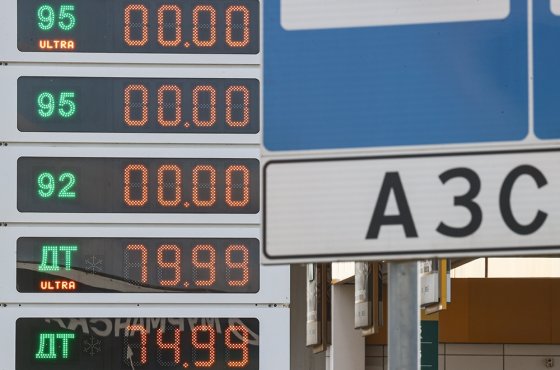Oil Exports from Russia by Sea Drop to Lowest Level Since Early 2025
Amid adaptations to U.S. sanctions against LUKOIL and Rosneft, Russian oil exports by sea fell to 291 thousand tons per day in mid-November, marking the lowest point since early 2025. Meanwhile, freight rates for transporting oil out of Russia continue to rise, reaching annual peaks in some routes.
Oil exports from Russia by sea decreased by 12.7% from November 10 to November 16, dropping to 291 thousand tons per day, according to a report from the Price Index Center (PIC). This figure represents the lowest level recorded this year.
The most significant decline occurred at the Primorsk port, where loading fell by 73.2% over the week, down to 43 thousand tons per day. In total, three Aframax tankers, each with a deadweight of 100 thousand tons, departed from Primorsk: one heading to Turkey, another to Egypt, and the third to an undisclosed location. Additionally, due to an incident, no shipments of Russian oil were recorded at the Novorossiysk port from November 14 to 17.
The decline in export volumes, according to the PIC, is attributed to adjustments in trading processes among certain companies. Analysts had previously indicated that such a need may arise in light of U.S. sanctions against LUKOIL and Rosneft. According to S&P Global Commodities at Sea (CAS), China and India, the two largest buyers of Russian oil, have increased imports of crude from the Middle East and the Atlantic basin in response to the tightening sanctions against Russia.
The increase in risk premiums and the global rise in demand for Suezmax tankers, with a deadweight of 135 thousand tons, raised the freight rate for transporting Russian oil from Novorossiysk to West India by 1.2% over the week, to $8.6 per barrel, as calculated by the PIC. Transportation of oil from the Azov-Black Sea ports to Turkey increased by 2.8%, to $5.1 per barrel, and to West India by 3.2%, to $8.8 per barrel, according to the PIC. As of November 17, the global Suezmax index stood at $63,130 per day, which is 1.7 times higher than at the beginning of October, according to S&P Global.
Market participants, as noted by the PIC, report a reduction in available tonnage from Greek shipowners. Greece has long been, in effect, the only jurisdiction within the EU owning vessels that transport Russian oil, says Sergey Tereshkin, CEO of Open Oil Market. Malta was another exception, but the volume of supplies by Greek tankers was significantly higher, he adds.
Some of the U.S. sanctions introduced at the end of October will take effect on November 21, causing shipowners to continue raising risk premiums when transporting Russian oil. The PIC explains that potential issues at unloading ports due to non-compliance with delivery deadlines could lead to substantial financial losses. However, analysts point out that the overall trend of rising freight rates will be driven by the global increase in the cost of maritime logistics, prompted by seasonal demand.
Igor Yushkov, an expert at the Financial University under the Government of the Russian Federation, believes that the cost of transporting Russian oil has reached its peak. However, the PIC forecasts that the record freight rates for Suezmax may be surpassed by the end of the year. The process of replacing some oil subject to sanctions will create additional demand for tankers, quotes Giovanni Gavarone from Maersk Tankers, according to CAS.
Until the end of 2025, the volume of maritime oil shipments from Russia will also depend on how importing countries perceive the risks associated with sanctions, believes Sergey Tereshkin. According to him, the recent decision by the U.S. Treasury Department's Office of Foreign Assets Control to extend LUKOIL's deadline for winding down foreign operations is a positive sign that buyers may interpret as a sign of easing related risks. The PIC suggests that the increase in freight rates for Russian oil will attract global carriers, including those from Greece, China, and the UAE.
On November 19, Deputy Prime Minister Alexander Novak stated that U.S. sanctions against Rosneft and LUKOIL have not impacted oil production in Russia. In November, oil production in the country is increasing slightly faster than in October, maintaining a year-end production forecast of 510 million tons. The discount on Russian crude will gradually decrease as the market adapts, said Alexander Novak.
Source: Kommersant




